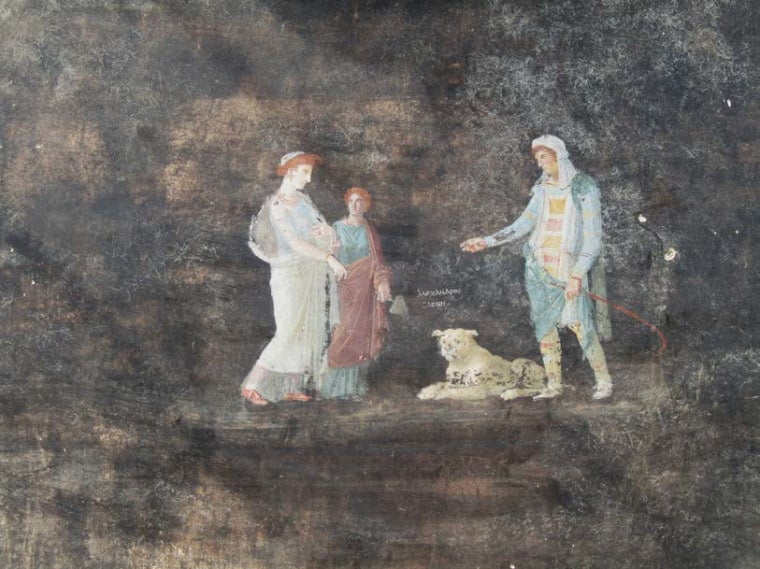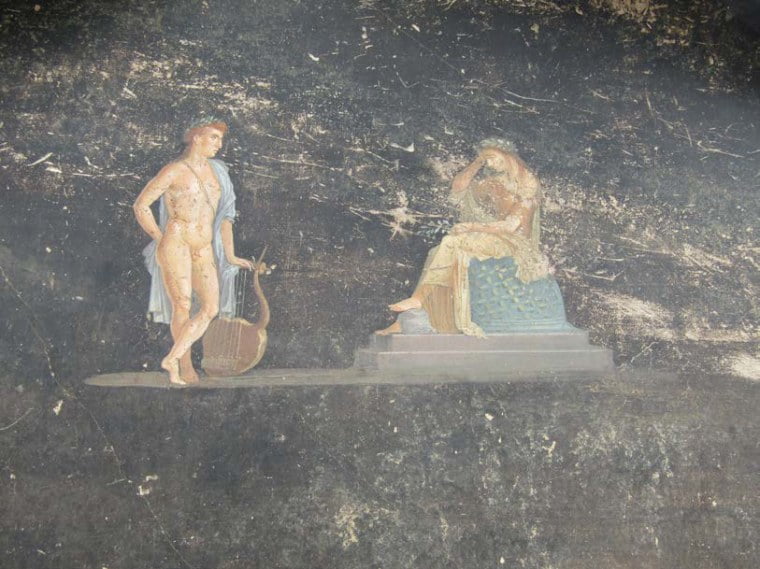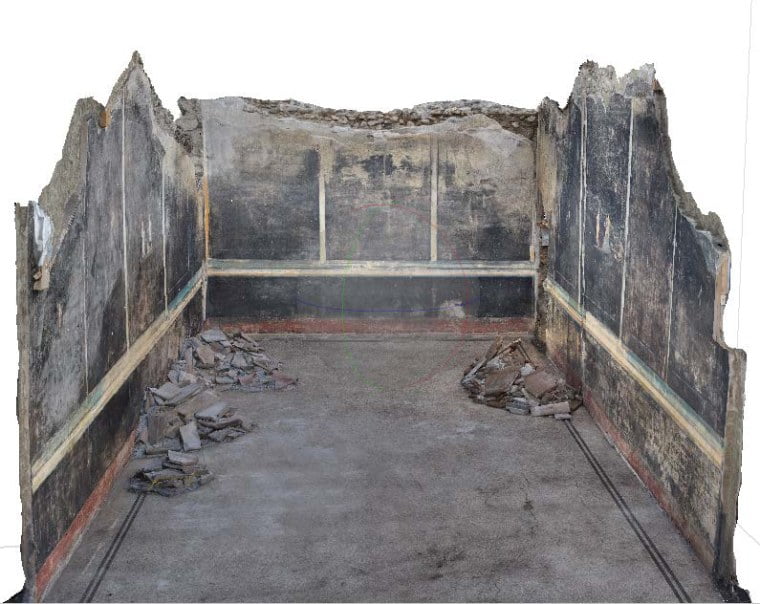Inspired by the Trojan War, the extraordinarily well-preserved frescoes were found inside what archaeologists called a “spectacular dining room.”
In Short
- Recent discoveries in pompeii have revealed astonishing frescoes depicting greek heroines and mythological scenes.
- Archaeologists uncovered these well-preserved murals in a “spectacular dining room,” providing insights into roman lifestyle and cultural influences.
- The discovery, originating from a previously unexcavated region of pompeii, highlights ongoing efforts in historical preservation.
- Pompeii’s rich history and hidden treasures continue to fascinate, with nearly one
- Third of the city still undiscovered.
- The excavation signifies a broader endeavor to conserve and restore pompeii’s unexplored and explored areas, preserving a vital part of ancient roman heritage.
TFD – Dive into the captivating world of Pompeii’s hidden treasures, where stunning frescoes unveil the rich tapestry of Roman history. Discover recent archaeological revelations and the ongoing efforts to preserve these invaluable remnants of ancient civilization.
Discovered in the abandoned Roman town of Pompeii, a collection of arresting murals depicting Helen of Troy and other Greek heroines have lain hidden for almost 2,000 years.
Inspired by the Greek poet Homer’s account of the Trojan War, the exceptionally well-preserved murals were found within what archaeologists called a “spectacular dining room” with peculiar black walls.

The shocking discovery, which is among the most significant in recent memory, was made public on Thursday. It originates from block No. 10 of the ninth sector of Pompeii, a region of the town that has never been excavated before and was devastated in 79 A.D. by the explosion of Vesuvius.
An ornate classical artwork with animals was a great conversation starter and showpiece for affluent politicians and business leaders when hosting guests.
According to a news release from the Archaeological Park of Pompeii, “it provided a refined setting for entertainment during convivial moments, whether banquets or conversations, with the clear aim of pursuing an elegant lifestyle.”
Rich Romans loved to vacation at beach resorts like Pompeii and Herculaneum, which was destroyed by an eruption that lasted more than 24 hours and had the force of thousands of nuclear bombs.
The space, which is 20 feet broad by 50 feet long, opens onto a courtyard and has a stairway that goes up to the first floor. Because of how well preserved the frescoes are, some people assume that they were painted right before Vesuvius erupted.

This notion seems to be supported by some less remarkable artwork and what appear to be abandoned tools and building supplies. Experts discovered a charcoal painting of two pairs of gladiators in the recently applied plaster on the arches of an adjacent stairway. Nearby is “what appears to be an enormous stylized phallus,” meaning penis.
The discovery of the initials ARV on a wall provided a clue as to the name of the villa’s owner; specialists surmise that this is Aulus Rustius Verus, a wealthy politician referenced in political propaganda during the era.
Greek mythology was deeply ingrained in upper Roman society. Rich residents of Herculaneum and Pompeii would have been familiar with the tales of Helen of Troy, Paris, Cassandra, and Apollo, the Roman god of the arts, all of whom are shown in the frescoes.
“The dominant theme seems to be that of heroism, shown by the depictions of pairs of heroes and deities involved in the Trojan War, but also of fate and, at the same time, of the possibility, often not seized, that humans have of changing their own destiny,” the park’s news release said.
Award-winning novelist and classicist Daisy Dunn said, “These stories were very much part of their foundation because the Romans actually believed that their whole people had descended from the people who were at Troy.”

The director of the archaeological park, Gabriel Zuchtriegel, stated in a statement that the paintings would appear to be moving, “especially after a few glasses of good Campanian wine,” due to the black walls and the flickering light of oil lights.
Zuchtriegel also argued that the black color scheme helped to hide the smoke from the lamps.
However, Dunn contended that this was probably an artistic decision.
“You enter a room with all-black walls and an all-white floor. That’s something that would be noteworthy in the present day, and it was back then, too, the woman remarked.
The finding emphasizes how much of Pompeii is still hidden away: nearly one-third of the site is undiscovered and unstudied by researchers.
The excavation that was made public this week is a small portion of a much bigger endeavor to help conserve and restore the Pompeii’s unexcavated and excavated portions, which now include 1,070 houses and apartments with over 13,000 rooms.
A staggering fact that many visitors are unaware of is that around one-third of the city is still under ground. Recent years have seen a greater emphasis on preservation and protecting existing discoveries rather than making new discoveries, according to Dunn.
Conclusion
The remarkable frescoes of Pompeii offer a glimpse into ancient Roman life, blending mythological tales with historical preservation. As efforts continue to uncover hidden treasures, Pompeii’s legacy remains a testament to the enduring fascination with Roman history. The ongoing excavation and conservation efforts underscore the importance of preserving cultural heritage for future generations to cherish and explore.
Connect with us for the Latest, Current, and Breaking News news updates and videos from thefoxdaily.com. The most recent news in the United States, around the world , in business, opinion, technology, politics, and sports, follow Thefoxdaily on X, Facebook, and Instagram .
